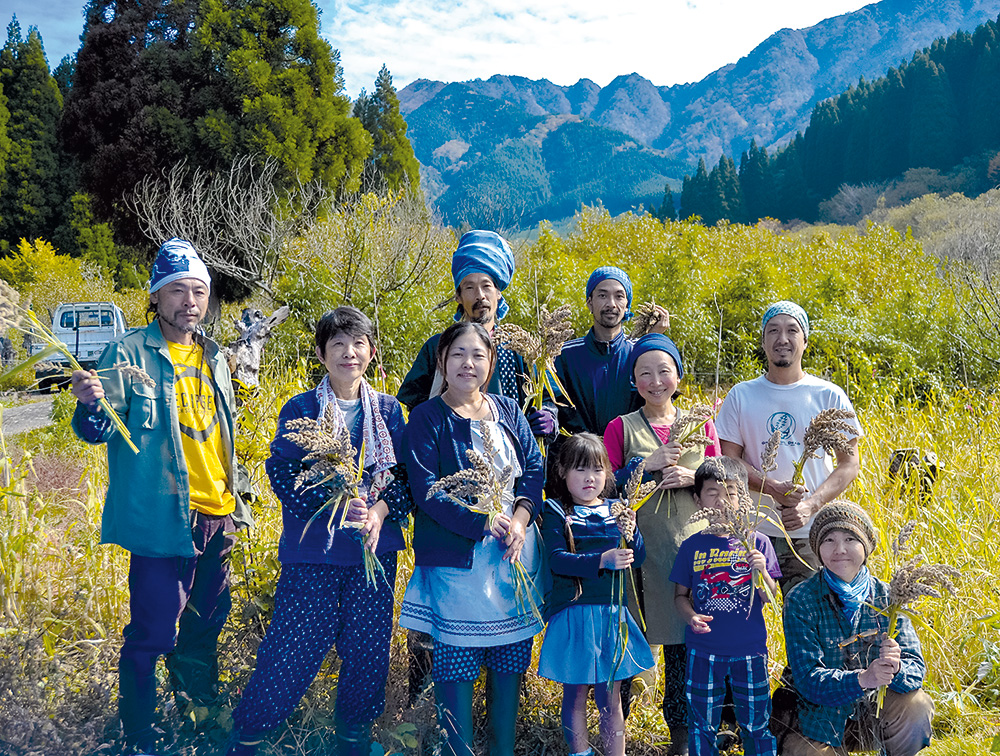

Shinto has 100,000 shrines and 78,890 priests in the country. This is due to the fact that "Shinto" has different meanings in Japan: most of the Japanese attend Shinto shrines and beseech kami without belonging to Shinto organisations, and since there are no formal rituals to become a member of folk "Shinto", "Shinto membership" is often estimated counting those who join organised Shinto sects. Shinto is the largest religion in Japan, practiced by nearly 80% of the population, yet only a small percentage of these identify themselves as "Shintoists" in surveys. Kami and people are not separate they exist within the same world and share its interrelated complexity. Since the Japanese language does not distinguish between singular and plural, kami refers to the divinity, or sacred essence, that manifests in multiple forms: rocks, trees, rivers, animals, places, and even people can be said to possess the nature of kami. Kami are defined in English as "spirits", "essences" or "gods", referring to the energy generating the phenomena. The oldest recorded usage of the word Shindo dates from the second half of the 6th century. The Japanese adopted the word Shinto ("way of the gods"), originally as Shindo, from the written Chinese Shendao ( Chinese: 神道 pinyin: shén dào), combining two kanji: shin ( 神), meaning "spirit" or kami and tō ( 道), meaning a philosophical path or study (from the Chinese word dào). Practitioners express their diverse beliefs through a standard language and practice, adopting a similar style in dress and ritual dating from around the time of the Nara (710–794) and Heian (794–1185) periods. Shinto in the 21st century is the religion of public shrines devoted to the worship of a multitude of gods ( kami), suited to various purposes such as war memorials and harvest festivals, and applies as well to various sectarian organizations. Still, these earliest Japanese writings do not refer to a unified "Shinto religion", but rather to a collection of native beliefs and of mythology. The written historical records of the Kojiki and Nihon Shoki first recorded and codified Shinto practices in the 8th century. George Williams classifies Shinto as an action-centered religion it focuses on ritual practices to be carried out diligently in order to establish a connection between present-day Japan and its ancient roots. Shinto ( 神道, Shintō), also kami-no-michi, is the indigenous religion of Japan and of most of the people of Japan. The mushūkyō is a specified identity, which is used mostly to affirm regular, "normal" religiosity while rejecting affiliation with distinct movements perceived as foreign or extreme. Some identify as "without religion" ( 無宗教, mushūkyō), yet this does not signify rejection or apathy towards faith. Although the vast majority of Japanese citizens follow Shinto, only some 3% identify as Shinto in surveys, because the term is understood to imply membership of organized Shinto sects. Religious affiliation is an alien notion. Spirituality and worship are highly eclectic rites and practices, often associated with well-being and worldly benefits, are of primary concern, while doctrines and beliefs garner minor attention. The western concept of "religion" is problematic in the Japanese context. Syncretic combinations of both, known generally as shinbutsu-shūgō, are common they represented Japan's dominant religion before the rise of State Shinto in the 19th century.

An almost equally high number is reported as Buddhist. According to estimates, as many as 80% of the populace follow Shinto rituals to some degree, worshiping ancestors and spirits at domestic altars and public shrines. Religion in Japan is manifested primarily in Shinto and in Buddhism, the two main faiths, which Japanese people often practice simultaneously. A ritual at the Takachiho-gawara, the sacred ground of the descent to earth of Ninigi-no-Mikoto (the grandson of Amaterasu).


 0 kommentar(er)
0 kommentar(er)
